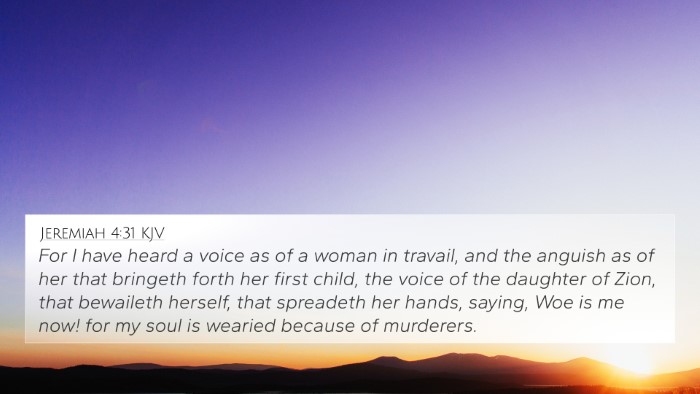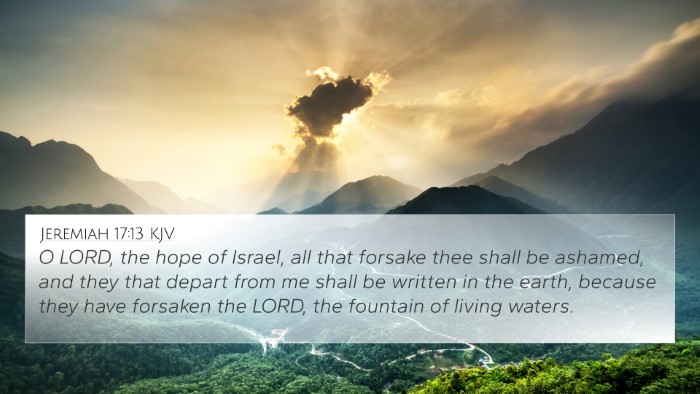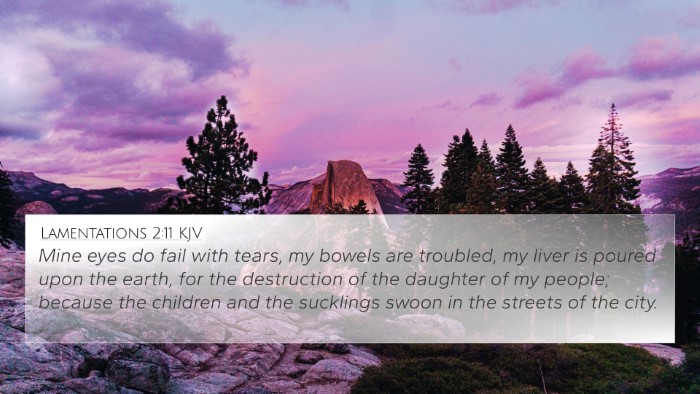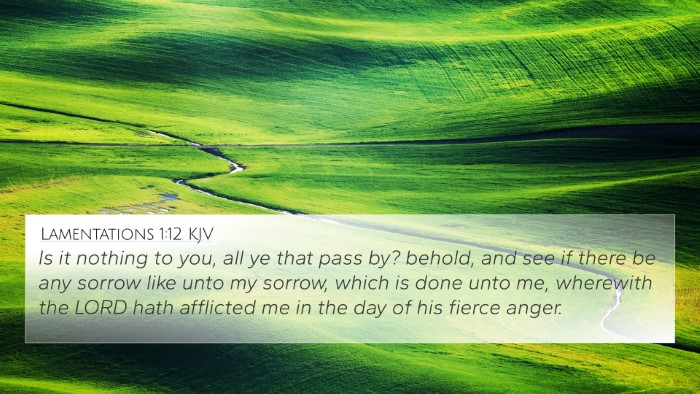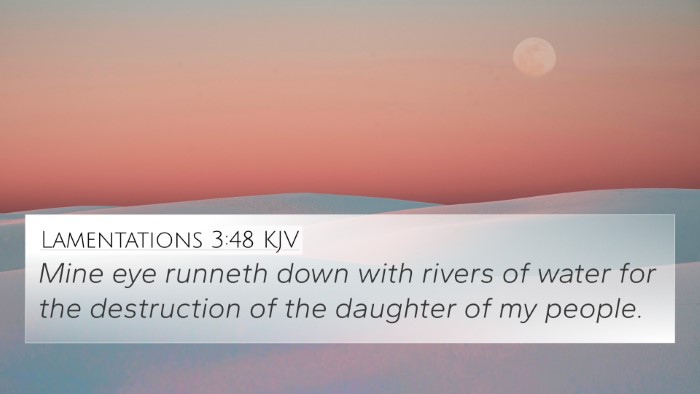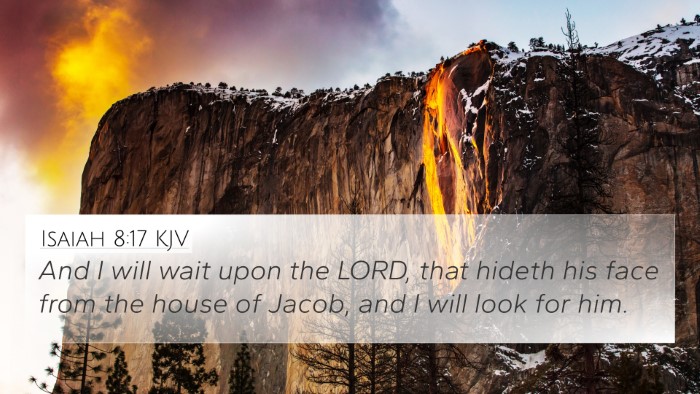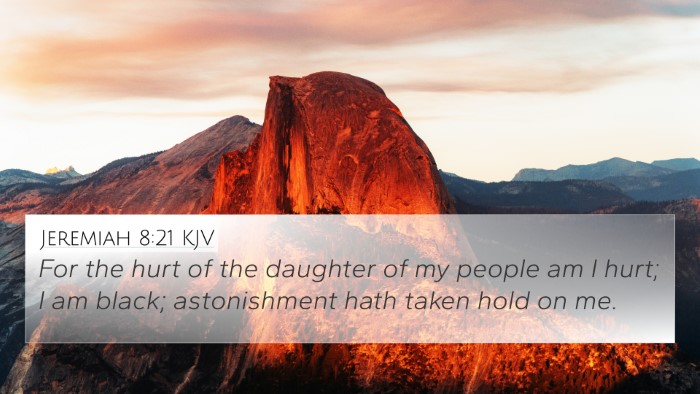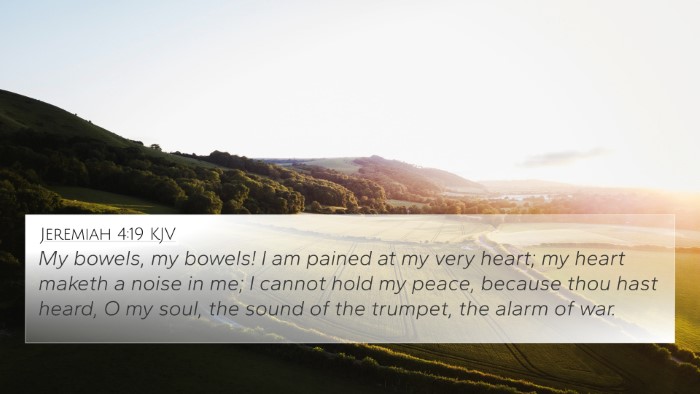Understanding Jeremiah 10:19
Jeremiah 10:19 reads: "Woe is me because of my hurt! My wound is grievous; but I said, Truly this is a grief, and I must bear it." This verse reflects the deep sorrow and pain of the prophet Jeremiah concerning the state of his people and his own suffering.
This verse offers insights into the emotional landscape of the prophet, symbolizing the collective anguish felt in times of national crisis. It encapsulates the themes of personal affliction and communal sorrow while inviting deeper reflection through the lens of Biblical cross-references.
Commentary Insights
In the analysis from Matthew Henry, we see that Jeremiah expresses a profound sense of woe, illustrating the prophet’s despair as he grapples with both personal and collective grief. This anguish is not merely physical; it is spiritual and emotional, denoting the weight of the burden he carries as a messenger from God.
Albert Barnes adds that Jeremiah recognizes the gravity of his wound, both in a literal and metaphorical sense. His declaration, "I must bear it," indicates a sense of resignation to his role as a prophet, affirming his commitment to his divine calling despite the pain associated with it.
Adam Clarke further expands on this by noting that Jeremiah's lament is reflective of the broader spiritual malady of the people of Israel, symbolizing the disconnect between their actions and God’s intentions. Clarke highlights that the prophet’s lamentation serves as a means of urging the people towards repentance for their sins that have led to such sorrow.
Related Bible Cross-References
- Isaiah 53:5: This verse speaks of the suffering servant, paralleling Jeremiah’s experience of bearing the wounds of the people.
- Lamentations 3:17-19: Here, the voice of sorrow resonates with Jeremiah's wounds, underscoring the themes of pain and desolation.
- Psalm 38:17: The psalmist expresses similar sentiments of anguish, highlighting the continuity of mournful experiences across the scriptures.
- Ezekiel 9:4: This illustrates God’s concern for the faithful remnant amidst widespread apostasy, similar to Jeremiah’s own lament.
- Romans 12:15: This New Testament verse encourages believers to empathize with the suffering of others, linking to Jeremiah's emotional plea.
- 2 Corinthians 1:5: This highlights the comfort found in suffering, reflecting the hope amidst despair that Jeremiah yearns for.
- Matthew 23:37: Jesus expresses lament over Jerusalem, paralleling Jeremiah’s own grief for the sins of his people.
- Revelation 21:4: The promise of God wiping away tears signifies the ultimate hope that lies beyond present suffering, resonating with Jeremiah's hurt.
- Hebrews 12:1-2: This passage encourages perseverance in suffering, echoing Jeremiah's struggle with his burdens.
- Galatians 6:2: The call to bear one another’s burdens links back to the communal aspect of Jeremiah's lament.
Thematic Connections
Jeremiah 10:19 is rich with themes of grief, loss, and the call for repentance, which echoes throughout both the Old and New Testaments. The connections between these verses signify that the emotional experiences of believers are interwoven with God's narrative of redemption and restoration.
Through scriptural cross-referencing, we find that the Bible often reiterates the pain of God's prophets. This creates a tapestry of shared human experience, inviting readers to delve deeper into the connections between Bible verses that illustrate the continuity of divine messages throughout the ages.
Tools for Bible Cross-Referencing: The use of a Bible concordance can enhance understanding by identifying connections and deepening the study through comparisons of different scriptures. Engaging in cross-reference Bible study methods enables believers to uncover thematic relationships that are critical in understanding individual verses like Jeremiah 10:19.
Conclusion
In summary, Jeremiah 10:19 stands as a poignant reminder of the prophet's heartache in the face of communal sin and personal grief. Its themes resonate with countless other biblical texts, encouraging believers to draw strength from the shared struggles and assurances found throughout scripture.
As we utilize Bible cross-reference guides, may we be guided in exploring the interconnectedness of these divine messages and reflect on how they inform our understanding of God's character and His dealings with humanity.







